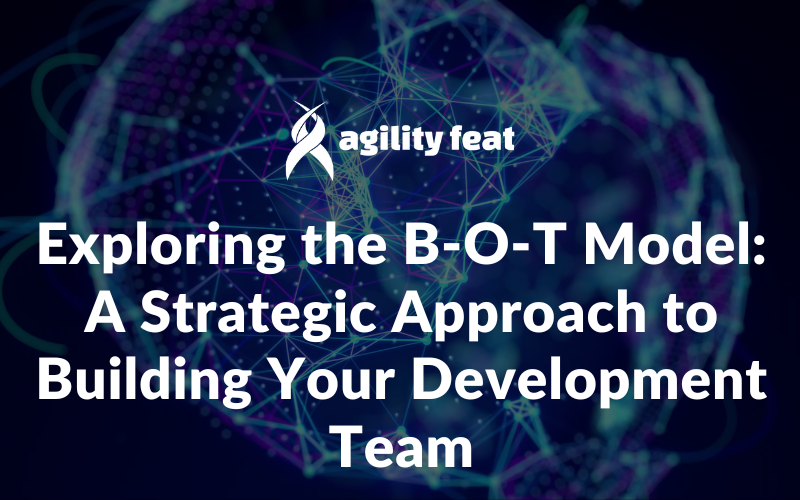While staff augmentation is an excellent way to quickly enhance your technical team, it may not be the ideal long-term solution for every business. For larger companies or those in regulated industries, having direct control over their development team is crucial. That’s where the Build-Operate-Transfer (BOT) model comes in. In this blog post, we’ll explore what the BOT model is, how it works, and the advantages it offers for companies looking to establish a dedicated development team in Latin America.
What is the Build-Operate-Transfer (BOT) Model?
The BOT model is a strategic approach that enables companies to establish their own subsidiary software development teams in Latin America. It involves three distinct phases: Build, Operate, and Transfer. This model provides a low-risk, high-reward pathway for companies to gain full control over their teams and operations in a new region.
Let’s look at the three phases of the BOT model.
Build Phase: Team Establishment / Legal and Accounting Setup
During this phase, AgilityFeat initially employs your team using our own entities, removing the upfront investment and risk for you.
At the same time, we work with local legal and accounting experts to establish a subsidiary for your company. This ensures compliance with local employment laws and regulations, and once it’s ready, we will transfer your staff to the new entity. We will initially own this entity until the Transfer phase is complete, but from this point forward, it will only contain employees who work for you and it will be managed transparently so you can see how it works.
Operate Phase: Management and Training
We manage the subsidiary transparently, allowing your staff to learn how to operate it. Our team handles day-to-day operations, providing you with the time to focus on your core business activities.
At the same time, your team receives comprehensive training on managing the subsidiary, ensuring a smooth transition when the time comes.
Transfer Phase: Handover and Available Support
Once you’re ready, we transfer the subsidiary to your ownership for a previously agreed upon Transfer fee. You will have an opportunity to audit the subsidiary for compliance, but this should be relatively straightforward since everything was already managed transparently in the Operate phase. This process is seamless, allowing you to take full control of the team and operations.
Even after the transfer, we remain available for support to ensure your ongoing success.
Transfers remain optional! If you decide to extend the previously agreed upon Operate phase, or to never Transfer the entity to yourself, we can continue to operate it on your behalf. This is not unusual for some companies who may decide they like having us continue to manage the local complexities for them, but in a model which is still more transparent than most staff augmentation arrangements.
Benefits of the BOT Model
Let’s explore some of the benefits of the Build-Operate-Transfer model.
Long-Term Savings
After the transfer phase, companies typically see an additional 20-30% reduction in savings compared to staff augmentation. These cost efficiencies are due to the elimination of intermediary fees and direct control over salaries and expenses.
Direct Oversight
Having direct control over your team allows you to ensure that all work meets your compliance requirements, especially important in regulated industries like healthcare and FinTech.
Custom Operations
You can tailor operations to meet your specific technical and security standards.
Low Risk
The BOT model allows you to experiment with tech staffing in Latin America with minimal risk. You can test the waters before committing to full ownership.
Flexible Commitment
If your plans change, there is no obligation to follow through with the transfer phase.
Reduced Learning Curve
Our team’s expertise and local knowledge reduce the learning curve associated with establishing a subsidiary. We handle the complexities so you can focus on strategic goals.
Lower Employee Turnover
The BOT model often results in lower turnover rates compared to traditional contracting, as employees have a clear path to becoming direct hires of your company.
Why Choose the BOT Model with AgilityFeat?
The Build-Operate-Transfer (BOT) model offers a strategic, low-risk approach to establishing your own subsidiary software development team in Latin America. With AgilityFeat’s expertise and support, you can achieve significant cost savings, enhanced control, and a seamless transition to full ownership. Start your journey with us today and unlock the potential of nearshore software development.
- Experience and Expertise: We have been helping US companies establish and manage development teams in Latin America since 2010. Our proven track record ensures your success.
- Local Network: Our extensive network of legal and accounting experts in various Latin American countries ensures compliance and smooth operations.
- Customized Solutions: We tailor our approach to meet your specific needs, providing a transparent process and comprehensive training for your team.
Interested in learning more about the BOT model and how it can benefit your business?
Contact us today for a free consultation!! We’ll assess your needs and provide a tailored solution to help you establish a dedicated development team in Latin America.










